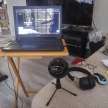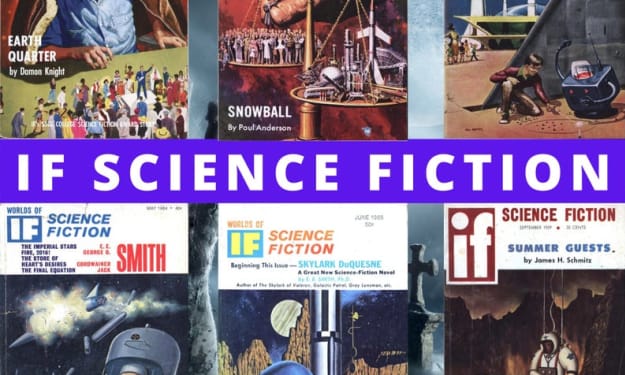K3+ A fantastic sci-fi novel of the future
Can humanity survive a billion years into the future?

How climate change and economic inequality coalesced into a dystopia, triggering a massive human migration to cities in space
Introduction
K3+ is a Hard Science Fiction novel set in the far future in which a colossal human population of 350 nonillions lives in rotating habitats around the stars—aka Dyson swarms. In this era, life spans have increased while aging remains frozen in the early twenties, space travel to distant stars is commonplace, and faster than light communication allows all mankind to be fully connected. Humanity has perfected AI, and it's now the omnipresent servant of the human species.
The title gets its name from the Kardashev scale for a type 3 civilization. Type 3 is defined by how human society can harness the power of an entire galaxy for its own needs. The novel is written by Erasmo Acosta with Gala Stevenson and published by Erasmix Books, Portland, Oregon. The book is 334 pages in length and copyrighted in 2018, 2020. K3+ is available in paperback, ePub, and audio formats.
In our obscurity—in all this vastness—there is no hint that help will come from elsewhere to save us from ourselves. Carl Sagan

The story:
The beginning of the story is set in the far future, about One Billion years or so. In this setting Humanity has left Earth far behind and branched out throughout the Milky Way galaxy. Settlement is accomplished by the use of Dyson swarms. Humans have evolved into multi-cultural language and use a form of telepathy to communicate with each other. Diseases have become ancient history with advances in DNA management and swarms of nano-bots in people's bloodstreams: Human beings have become nearly immortal in this future setting. A colony ship, The Eternity, is approaching a solar system in a nearby galaxy; as they prepare to build a new Dyson swarm, a discovery with profound implications for the entire human species is made. But first, we need to go back and see how all this exploration and technology got its start.

A Humble Beginning.
Before humans can get to this fantastic level of technology, someone had to start from somewhere. Going back to the early 21 century we meet the protagonist, Federico, a retired software engineer. Federico is an advocate of rotating habitats in space as opposed to living on Planets.
One night Federico calls into a talk radio program in which the topic of alien life is discussed. Federico asks the host if he thinks that an alien civilization would leave some type of evidence that would indicate the use of a Dyson Sphere. The host, an astronomer, suggests that is possible. Federico presents his argument over the use of space-faring habitats instead of settling on other planets. His perspective creates a lively discussion in the studio and wins him an invite by the show host. The program host sends in an invitation for Federico to meet him and some friends at a party. He accepts and meets some celebrities and some industrialist types who share similar interests. Federico once again presents his argument for space habitats, and this does win over a few people. Latter he goes for a job interview for a project called The Space Initiative.
Once interviewed by the project chairman, Federico accepts a position as an administrator, thus embarking on a lifelong journey to the stars.
The Space Initiative
The Space Initiative was started in the early 21st. Century as a non-profit organization. Its goal is to create a livable space habitat for colonization and exploration. The project itself is an ambitious undertaking involving 1000s of man-hours, developing new technology, and a PR campaign to obtain funding for the project. The project starts with a space habitat the size of one of the world's tallest skyscrapers, by mining near-Earth asteroids. In the early 22nd century, the Initiative is mining huge amounts of raw materials from the planet Mercury and can build the first island-sized rotating habitat, capable of housing 20 million people. They also deploy skyhooks, a means to put people and cargo into orbit without rockets. The organization spends decades on research which culminates into centuries while pursuing its goals of colonization.

Refuges and War.
One of the greatest assets the space initiative has is its people. Not just the scientists who labor around the clock to develop new technologies. It is the influx of ordinary people who desire to live in the habitats. Over the next two centuries or so, more and more people from Earth become attracted to a better life occurring in the habits than living on the planet. The Earth is faced with an abundance of problems ranging from poverty to oppression. The inequalities that exist between the habits and the Earth lead to an all-out war that nearly destroys both places. However, it is the Earth that suffers from devastation. Though it all, Federico finds the time to help a teenage runaway get asylum from an abusive father. Later, he helps evacuate the team of researchers, who just made one of the greatest scientific advances in the history of mankind, to the safety of space before the war starts.

Aftermath.
Once the war is over, the space habitats survive but the Earth's environment is devastated. A result of a nuclear exchange between the world powers of the US, Russia, and China. However, the Space Initiative works to help restore the planet to liveable conditions. Again the researchers and scientists work tirelessly to make technology that benefits humanity as the project moves forward in its next phase.

Colonization and Explorations.
Throughout the next few centuries, the project expands human beings throughout Outerspace using Dyson swarms. The population continues to swell due to longer life expectancy and high birth rates. With more resources available, some families decided to have more children since there is less poverty living in the habitats. As more and more habitats expand throughout the cosmos, the entire Milky Way becomes explored within millions of years.

My thoughts.
I loved reading this novel. K3+ was an excellent and well-thought-out science fiction story. The author makes it easy to understand the science behind the story. He does get somewhat technical in explaining some points in the story, but not in a way that most people couldn't understand. Highlighted Wikipedia hyperlinks that appear throughout the novel; are used to expand some of the subjects. The author derives much of the science used in the story from futurist Isaac Arthur. Isaac Arthur has a video series uploaded to YouTube on a wide variety of topics, including space exploration. He also has a Facebook group called Science and Futurism with Isaac Arthur, aka SFIA.
While reading this story, I felt the writer conveys a sense of hope for our future. In this novel, the reader sees how hard work with the applications of science and technology can make the future a better place. The Space Initiative was always working toward the next breakthrough in technology; groundbreaking tech would turn up in every chapter.
I would recommend this novel to anyone who loves space travel, hard science, and the future. The story is fast-paced and keeps the reader interested. Try reading it for yourself and step into a different world.
How can you get your copy of this novel?
You can download a copy of this ebook at books.apple.com at play.google.com and amazon.com.
You can follow the author on Facebook.com /erasmix and Twitter @erasmix
You can also read more about space colonization and the book K3+, at the writer's website.
About the Creator
Edward German
A long-time sci-fi fan who loves the internet. I am also writing on subjects other than sci-fi.
you can follow me on "X" @EdwardGerman3 Listen to my podcast The 1950s Science Fiction Podcast on Spotify for Podcasters.






Comments
There are no comments for this story
Be the first to respond and start the conversation.